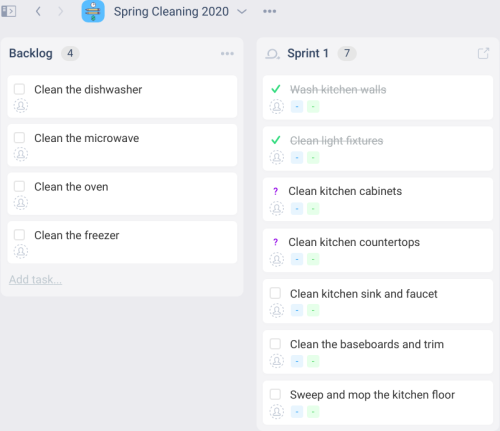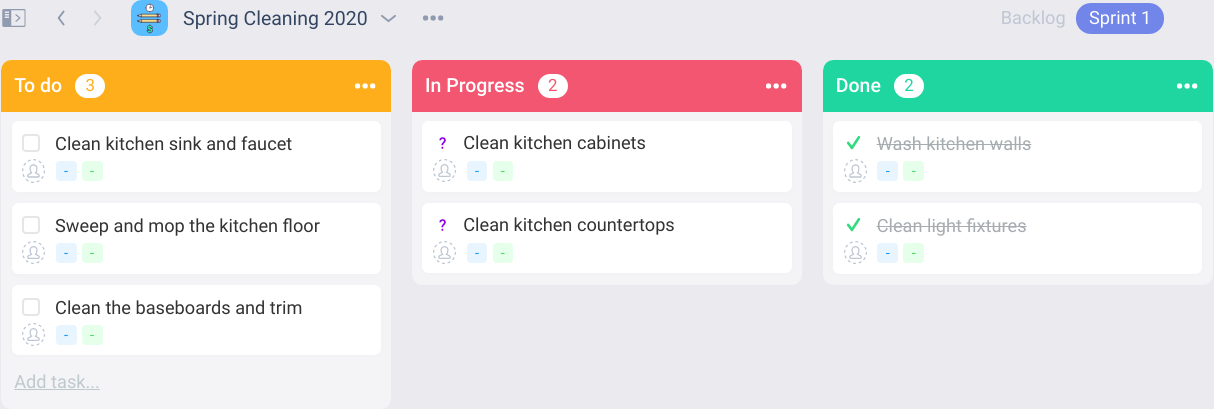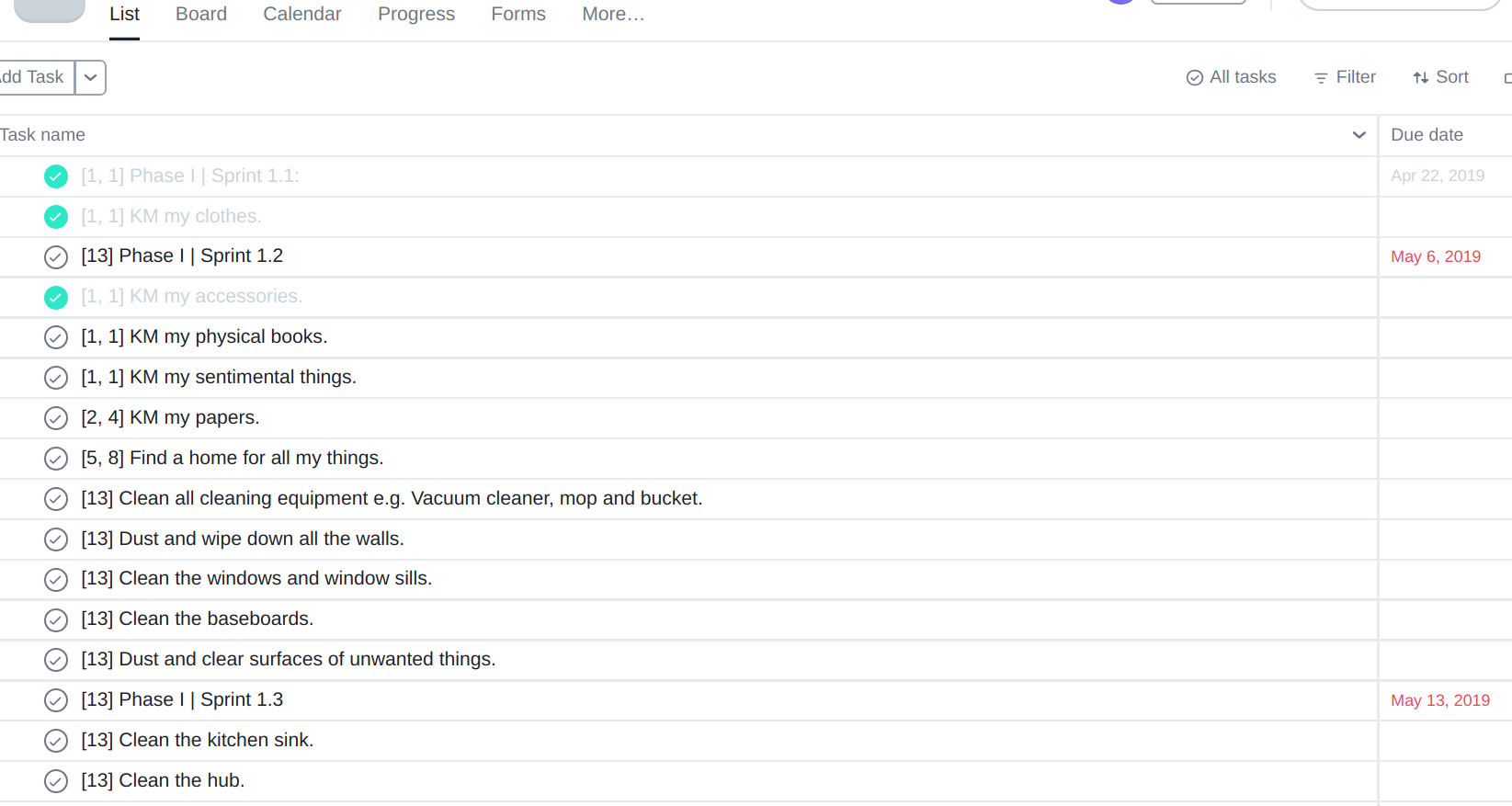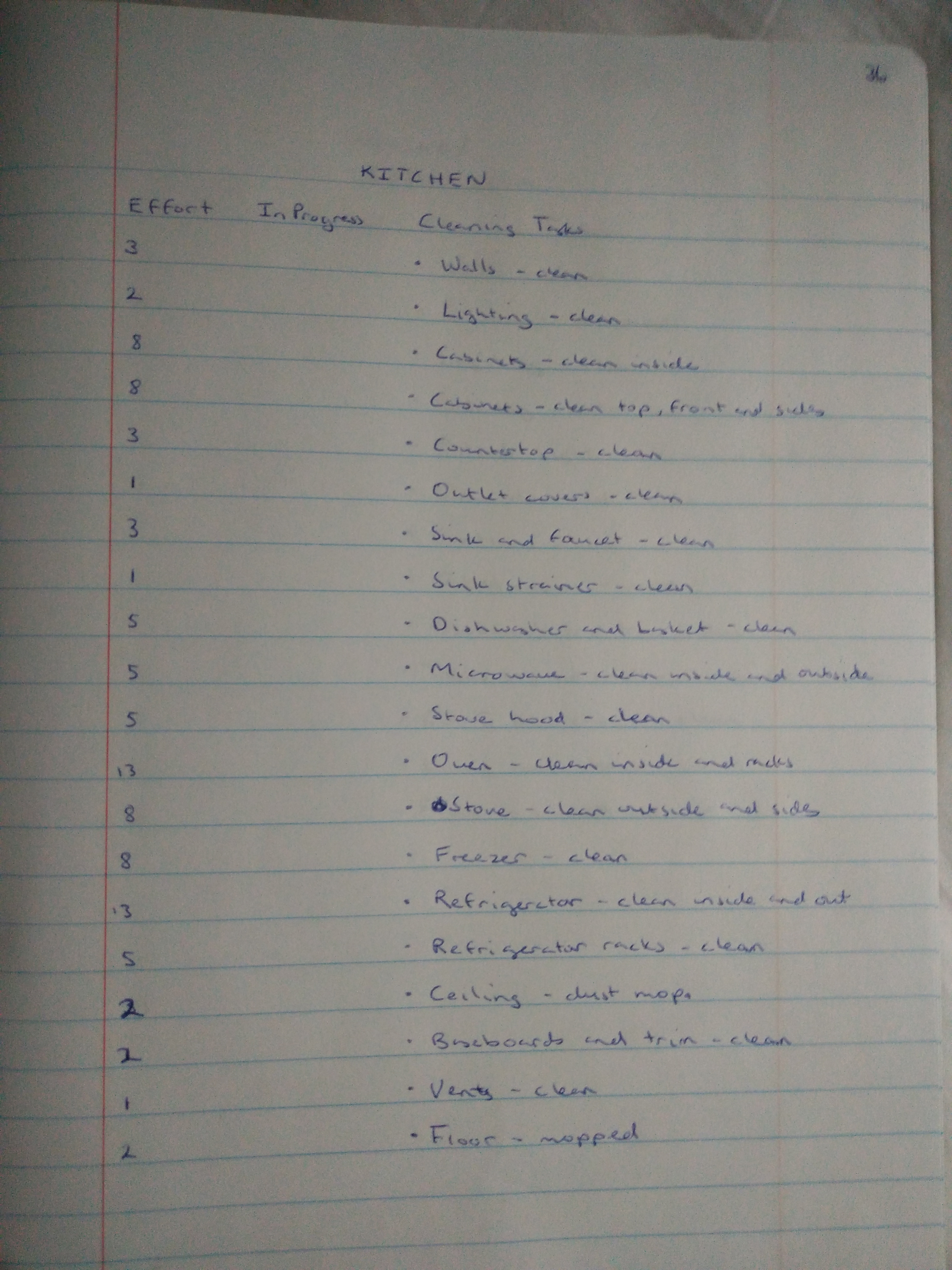- Are you new to housecleaning-tips.com: Start Here
- Claim your free copy of our Special Report: "How To Clean Your House: Advice From the Past"
The Proper Way to Use House Cleaning Project Management Tools to Avoid Getting Stuck in the Planing Phase
As a software developer, I tend to bring home my work process and project management tools, to help make the time I spend on house cleaning more efficient. The tools I use at work are agile based and can come in many forms including pen and paper.
Here are some of the tools that I've used for my house cleaning projects...
Online and Desktop Project Management Tools You Can Use for House Cleaning
There are a lot of products online that can be used for free for house cleaning project management. I personally like to use one called Ora. But there are others that can do the same job like Trello and Asana. These tools are meant for use in the workplace to keep teams and customers aligned so the do tend to come with a lot of bells and whistles.
For a house cleaning project you don't really need all of that, just a list and an agile scrum or kanban board. Also, if you want others to have access you can do that to. Although there is a limit.
Ora
I use Ora's scrum board for my spring cleaning projects on my desktop. Although this year I decided to try out using a bullet journal. However here's a look at what me scrum board would have looked like.
The process goes like this...
- I would create a backlog, which is basically a list of most of the cleaning tasks I want to complete.
- Move those that I expect to be completed within the next two weeks to a TODO list.
- Move any task the I want to complete immediately is moved to the InProgress list.
- Any completed tasks are then moved to the DONE list.
- Rinse and repeat
I find that it doesn't really matter what tool you use. The process is the same. Just pick one you like and try not to get drawn into any of the features you don't really need. Remeber, planning is fun, but it's only taking the planned actions that gets the results.
Asana
In the past, I've tried Asana. However that was before I even knew about the agile methodology for work. So let's just say it ended up a bit of a mess because I got caught up in a lot of their cool features. Here's a list of house cleaning tasks from 2019.
Some were completed and mark off, others were not completed by their due dates and left as incomplete since I did not return to the app until now.
Although I've had some mixed results using these applications, I have enjoyed using them now that I now how to use them properly. What extra cool about them is that they include calendars. That means you can have a house cleaning schedule or adgenda at a glance depending on if you also use the due dates feature.
Physical Tools for House Cleaning Project Management
Physical tools for project management can get creative - particularly at home. I've seen anywhere from small circular cork boards stuck to home office walls, to glass doors being used as scrum boards.Bullet Journal House Cleaning Management Spread
I've recently fallen in love with bullet journaling. After going down the rabit hole of youtube videos on the topic, I found one which included a Kanban board. Yes, agile methodology in a notebook.
Why didn't I think of that?
Anyway, I pulled out one of my many new notebooks and give it a try for my 2020 spring cleaning tasks.
Even though is it a simple notebook without any bells and whistles, I still have to remind myseld to not get lost and waste to much time in the planning phase.
I wanted to keep the process as simple as possible, but also experiment with the idea of prioritizing tasks. So I included three columns for each of the six room that would get the benefit of spring cleaning. The Effort column shows the amount of effort that I think a task will take. The values are based on the fibonacci sequence from 1 to 13 (1, 2, 3, 5, 8, 13) where 1 takes the least effort and 13 the most effort.
Ideally I would start with the tasks which take the most effort if I wanted to see the most impact. On the other hand, if I'm short on time, I would do a task with the least effort.
Column 2 is the In Progress where I just put a dot to signal the tasks that are currently being worked on. When a task is completed I would simple change the dot into an x.
The last column is the description of the cleaning task to be done.
The main difference with the physical tool is that there are no bells and whistles. No calendar or agenda that are automatically made once you've listed your tasks. I could just go ahead and make calendars in my notebook or online calendar - but for now it's not really necessary.
Scrum Boards for House Cleaning Management
These physical tools require a bit more effort. On the plus side the can spark creativity and has the advantage of a quick visual of your progress without having to open a laptop or app on your phone. This is especially useful if you've in the middle of a cleaning task where your hands are wet.

You can set up boards on doors, white boards, wall, or glass partitions like the one in the picture above. All you'll need are postit notes or index cards, pins if using index cards, markers (non-permanent) and eraser if using a whiteboard.
All the tools I've shared with you here have their advantages. Have fun trying them out until you settle on the precious few that work for you.
Subscribe to the Saturday Morning Cleanup for Weekly cleaning advice.






